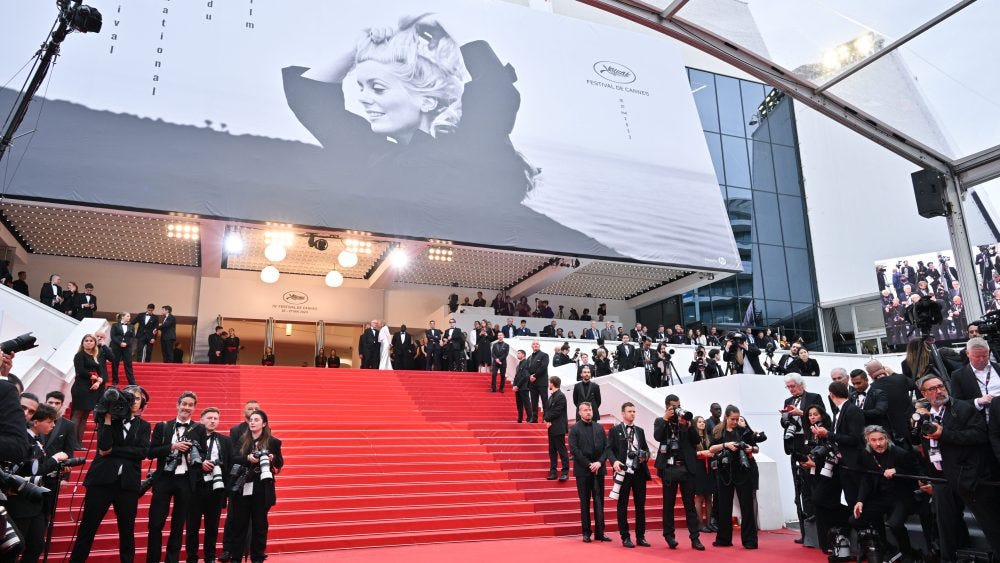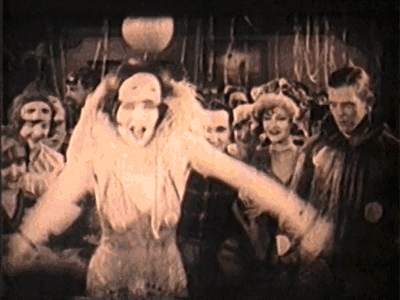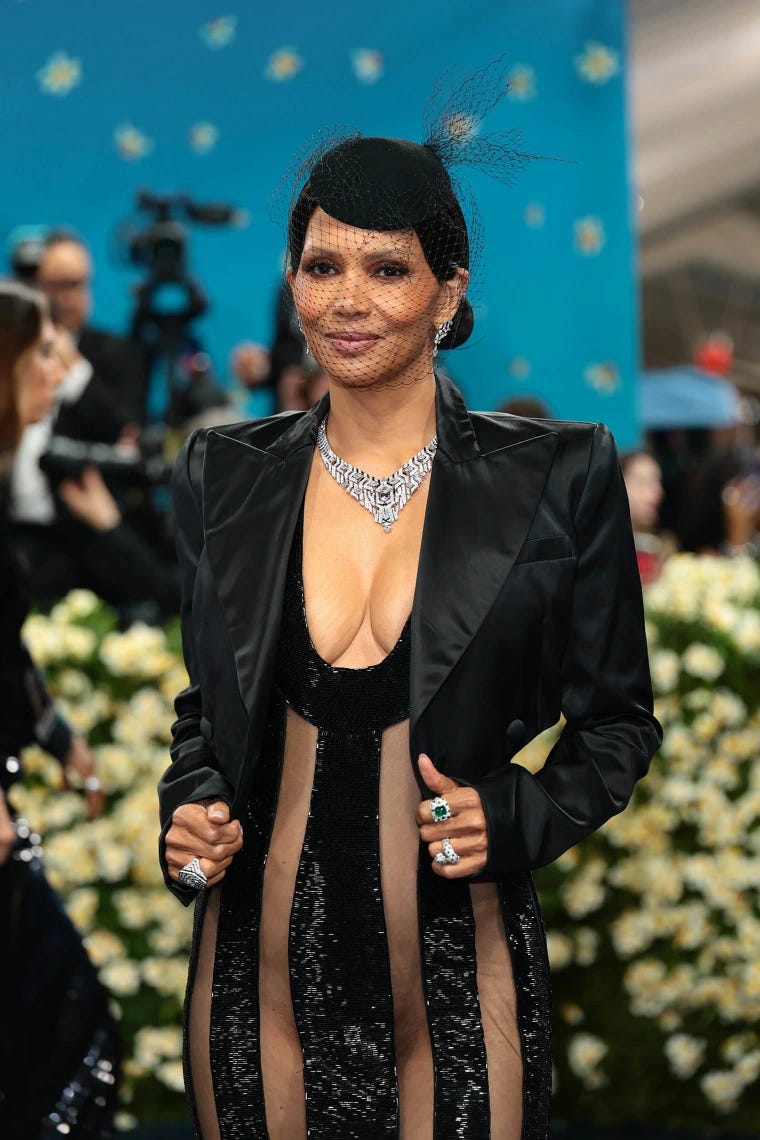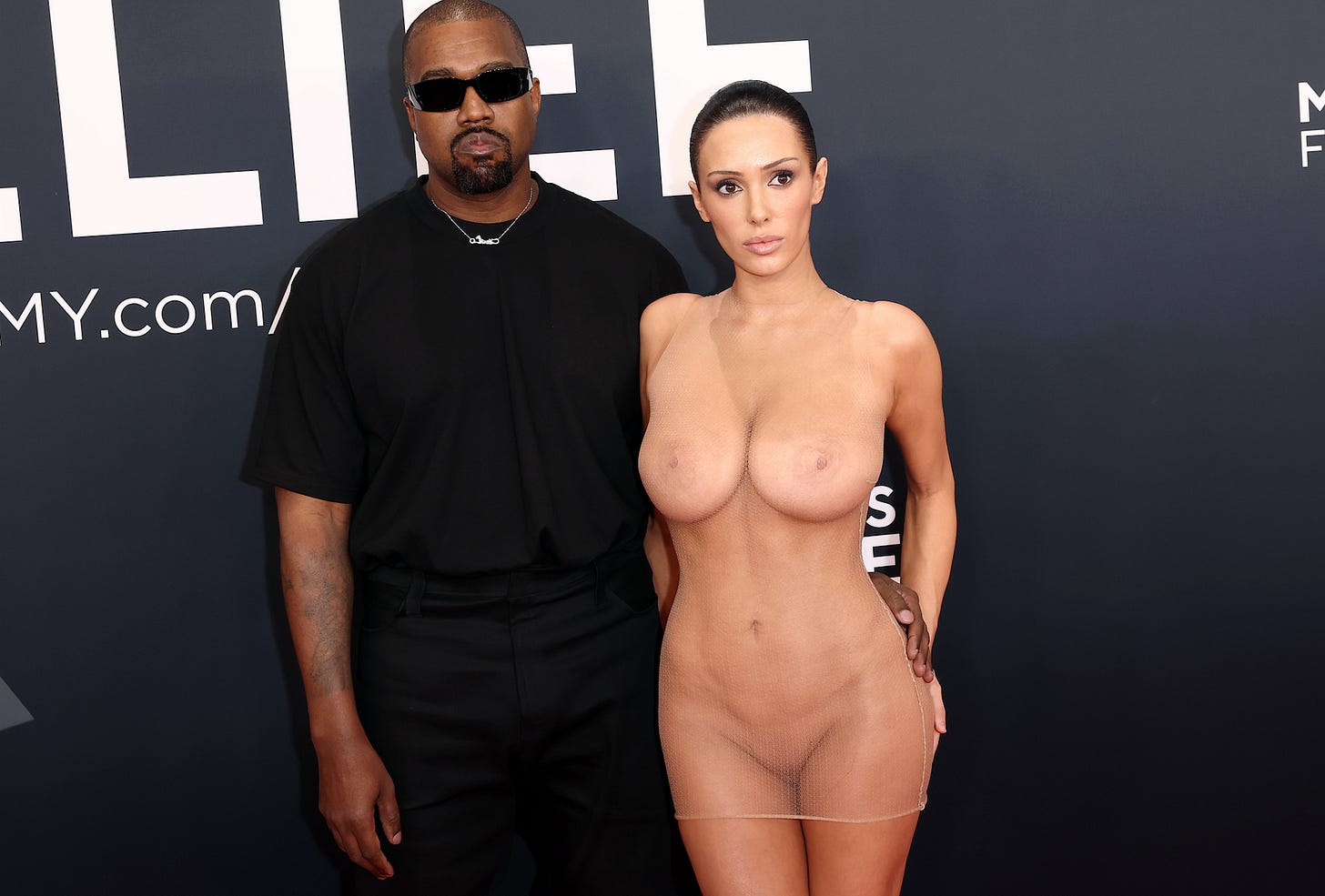Cannes tells stars to cover up
As sheer gowns dominate fashion, the film festival draws a line against nudity—but the allure of transparency shows no sign of fading

The Cannes Film Festival has long been a symbol of glamour and excess. But ahead of its 78th edition, organizers updated their official dress code to draw a clear line: “For decency reasons, nudity is prohibited on the red carpet, as well as in any other area of the festival.” The revised charter also forbids “voluminous” outfits that might obstruct the flow of guests or complicate seating in the theater.
While the new rules don’t represent a shift in policy so much as a formalization of past expectations, the timing raised eyebrows. With the 2025 fashion season dominated by sheer fabrics and translucent silhouettes, the move reads less like a neutral clarification and more like a cultural correction. Recent provocations—such as Bianca Censori’s fully see-through Grammys dress—have pushed the envelope so far that Cannes, ever eager to preserve its image, appears to be snapping back.
The sheer dress era
Sheer dresses aren’t new. In fact, they’ve been part of the fashion landscape for centuries, worn by French courtesans during the Napoleonic era and scandalizing filmgoers as early as Clara Bow’s barely-there gown in 1925’s My Lady of Whims.1

Marilyn Monroe’s famously see-through “Happy Birthday, Mr. President” dress in 1962 added another bold chapter, and the look was revitalized in the 1990s with designers like Tom Ford and Jean Paul Gaultier embracing transparent couture.2
But in the last five years, sheer has gone from a daring red carpet choice to a dominant fashion trend—and not just for shock value. The look has become increasingly associated with feminist empowerment and the push for body autonomy, particularly through the “Free the Nipple” movement, which challenged the unequal treatment of toplessness and the sexualization of female bodies.
Actress Florence Pugh has been a prominent figure in this shift. In 2022, she wore a sheer Valentino gown that revealed her chest and responded directly to criticism, telling Vogue, “If I’m happy in it, then I’m gonna wear it... How can my nipples offend you that much?”3
Pugh’s stance seemed to tap into a broader cultural movement toward normalizing nudity as a personal and political statement, rejecting the idea that exposed skin should automatically be read as provocative. Of course, it still was provocative, as evidenced by how broadly it was written about in fashion magazines. Still, the trend seems to reflect a cultural recalibration: celebrities and fashion houses alike are using translucent fabrics to reframe the female body as something not to be censored, but accepted—even celebrated—without shame.
The 2025 Grammys featured an array of see-through looks, including those worn by Chrissy Teigen and Victoria Monét. Still, none provoked quite the same response as Bianca Censori’s.
Bianca and Ye at the Grammys
Censori, the 30-year-old model and architectural designer currently divorcing then-husband Kanye West, arrived on the Grammys red carpet on Feb 2nd, cloaked in a black coat. Then, in front of the cameras, she removed it to reveal a Yeezy-branded dress so transparent it earned the name “THE INVISIBLE DRESS,” which Ye used in his Instagram caption.4
While not technically nude—California law requires intent to sexually gratify or offend for an act to qualify as indecent exposure—Censori’s look was widely described as appearing naked. Psychologists commenting on the moment noted her flat expression and stiff demeanor, sparking debate over whether the choice was hers or reflective of a controlling relationship. Either way, the moment pushed the sheer trend past its typical territory of titillation and into the realm of cultural flashpoint.
Fashion historian Deirdre Clemente explained the impact succinctly: “Why Censori’s dress is different from previous incarnations of Marilyn Monroe or Kim Kardashian, is that it breaks a fundamental rule of fashion. And it does that on purpose,” she said. “For millennia, fashion has been used to simultaneously ‘hide’ and ‘flaunt’ the female form. It is in that tension that fashion exists. Censori’s dress takes away the tension between ‘wondering’ and ‘knowing’ that has defined evening wear for centuries.”5
We can argue that the human body is not inherently obscene, but the fact remains that it is still provocative.
Backlash in Cannes
Though the Grammys controversy happened across the Atlantic, the aftershocks were felt in France. Cannes officials stopped short of naming any specific trigger for the dress code revision, but the timing left little ambiguity. The decision to formally prohibit nudity came just days before opening night—and forced last-minute changes from some high-profile guests.
Oscar-winning actress Halle Berry, who is serving on the Cannes jury this year, revealed she had originally planned to wear a showstopping gown with a long train but had to opt for a more conservative haltered look. “I had an amazing dress by Gupta that I cannot wear tonight because it’s too big of a train,” she told reporters, adding diplomatically, “The nudity part is also probably a good rule”.6

Still, for a festival that once turned away women for not wearing heels, Cannes’ focus on decorum is nothing new. What is new is how conspicuously the institution is staking its position in the ongoing culture clash between fashion-forward self-expression and traditional concepts of “decency.”7
Nudity isn’t indecency
While Cannes may have a right to set dress codes for its red carpet, it’s worth asking what cultural work these bans are doing. “Decency,” after all, is not a fixed concept. It’s subjective, politicized, and constantly evolving. In the context of Censori’s stunt and the global fascination with sheer fashion, nudity is not simply about the body—it’s about who is allowed to show it, in what context, and why.
Planet Nude has long maintained that nudity is not inherently sexual or indecent. The nudity seen on red carpets may not be the same as social nudity or naturism, but the policing of bodies—especially women’s bodies—is a shared concern. Whether the intention is to shock, sell, protest, or simply adorn, we should be cautious of institutions that frame the unclothed body as a threat to order.
Censori’s dress might have taken things too far for some. But so did Clara Bow’s, Marilyn Monroe’s, Florence Pugh’s, and hundreds of others that, in hindsight, defined their eras. If history tells us anything, it’s that what we call “indecent” today may be couture tomorrow. 🪐
Jackson, H. (2024, March 15). The sheer power of transparent clothing. Vogue. https://www.vogue.com/slideshow/sheer-dress-trend
Blazio-Licorish, T. (2024, September 11). The sheer trend is here to stay for Spring 2025. WWD. https://wwd.com/fashion-news/fashion-features/gallery/sheer-trend-1970-spring-2025-collections-1236608056/
Wikipedia. (2024, April 22). Free the nipple. https://en.wikipedia.org/wiki/Free_the_nipple
Lowe, L. (2025, February 5). Experts explain Bianca Censori’s Grammys look. Today. https://www.today.com/popculture/bianca-censori-grammys-outfit-controversy-rcna190613
(Lowe, 2025).
Vasquez, W. (2025, May 13). Halle Berry forced to change Cannes dress after film festival bans nudity. New York Post. https://nypost.com/2025/05/13/entertainment/halle-berry-forced-to-change-cannes-dress-as-film-festival-bans-nudity/
Shewfelt, R. (2025, May 13). Cannes tells celebs to cover up, prohibiting any nudity at festival ‘for decency reasons’. Entertainment Weekly. https://ew.com/cannes-film-festival-prohibits-attendee-nudity-at-festival-11733578/




Heidi Klum did not change her plans and arrived with a long train.
I wish they were all completely nude.